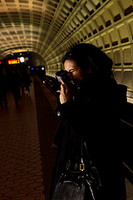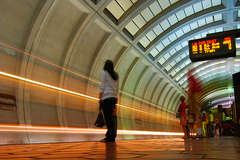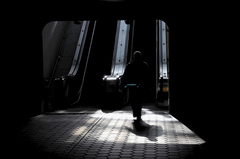Suspected terrorist no reason to fear photography

Photo by whlteXbread on Flickr.
Yesterday, the news broke that an Ashburn, Virginia man was allegedly planning to detonate explosives on the Metro.
The alleged plotter, Farooque Ahmed, was arrested for providing material support to a terrorist organization. According to the FBI, the public was never in danger. Apparently, agents of the Bureau posed as members of al-Qaeda as a part of the investigation.
The press has made a big deal about Ahmed’s photography of his target stations. We should not take this as an excuse, however, to restrict photography in the Metro.
Since agents of the FBI pretended to be terrorist operatives, it’s not clear whether they directed him to photograph the subway or whether he did it at his own behest. Regardless, it is clear that he intended to use his surveillance and photos of the Metro to maximize damage.
This will likely lead some to call for banning photography in the Metro system and in other transit systems nationwide. That would be an unfortunate and unproductive step in the wrong direction.
Photography is not and has not been prohibited on Metro. The Department of Defense does prohibit picture taking on its property, however, which includes the Pentagon station, transit center, and surrounding areas.
But the ability of riders to take pictures is not a risk to Metro or to our national security. While some terrorists have cased targets with cameras, others have not. Most notably, the perpetrators of the attacks on the London Underground and Madrid commuter trains did not photograph their targets ahead of time.
The proliferation of cameras — and in Washington, tourists — means it will be virtually impossible to keep Metro patrons from snapping pictures. And station managers and police officers have much bigger issues to deal with.
Virtually all of the photos taken in the system are harmless. Sending Metro employees to harass tourists from Des Moines experiencing their first subway ride or teenage girls capturing a night out with their cell phone is a waste of good resources.
But a camera is a tool not only for capturing memories, but also one of creating art.
The Metro offers an exciting and challenging place to try one’s hand at photography. Dim conditions, indirect lighting, complex shapes, and moving parts can combine to create some fantastic shots.
A true security strategy would be able to discern harmless photography from malicious intent. Metro is right to enlist the help of riders in securing the system. But it is important that they not fan the flames of fear. Passengers jumping at shadows won’t help the situation.
A good approach might be the one taken by Sacramento’s transit agency, which tells riders to be wary of suspicious activity. And it lists things that are suspicious. Photography itself does not rise to that level. But, someone “taking pictures or videotaping in areas of no interest to the general public” might be worth noticing.
An outright ban, or even the suggestion that one might be appropriate, will send the wrong message. It will send the message that everyone with a camera is deserving of suspicion.
It will also send the message that there is nothing worth photographing on transit. That this daily element of our lives holds nothing desirable to capture for memory or documentation, for art or expression.
As far as I know, no one at Metro has talked about banning photography. Let’s hope that they don’t start now.


